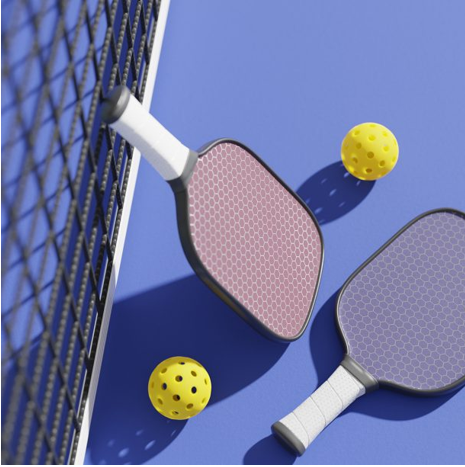By Marie Serrado
Pickleball has become the fastest rising popular sport. Pickleball combines elements of tennis, badminton, and table tennis. While it’s a fun and engaging activity for players of all ages, it’s important to be aware of potential injuries that can arise from the fast-paced nature of the game. In this blog we will explore some common pickleball injuries and share tips on how to prevent any injuries on the court.
Sprains and Strains:
Some common injuries in pickleball have to do with sprains and strains in wrists, elbows, calves and more. Pickleball involves quick lateral movements, sudden stops, and frequent changes in direction, putting players at risk of sprains and strains. A common injury when playing pickleball are acute injuries such as ankle sprains or ankle injuries. Depending on the severity of the pain, it can cause an impairment to movement and unbearable weight. Some treatments can include the RICE method.
RICE stands for rest, icing, compression, and elevation. It’s important to know when the pain becomes too much. If the RICE method doesn’t work, it is best to consult a health care provider or physical therapist to see how they can help.
Tennis Elbow:
Tennis Elbow expresses itself with intense pain on the inside of your elbow joint. Golf elbow is when you have pain on the outside of your elbow. Repetitive arm movements, especially during overhead shots, can lead to tennis elbow or lateral epicondylitis, causing pain and discomfort in the outer part of the elbow. Lateral Epicondylitis: is swelling of the tendons that bend your wrist backward away from your palm. Some tips in order to help prevent Tennis Elbow, are:
-
- Keep your arms flexible and strong; practice proper stroke technique to reduce strain on the elbow.
- Avoid repetitive movements.
- Warm-up before you start.
Shoulder Injuries:
The overhead nature of many pickleball shots can contribute to shoulder injuries, such as rotator cuff strains or tendonitis. Rotator cuff injury can be caused by an overuse in the shoulders. Problems range from tendonitis and bursitis to a tear of the tendon itself. Bigger tears can create weakness. Someone might not be able to use their arm. With pickleball the game is an overhead activity, which requires several different arm movements.
To prevent Rotator Cuff injuries, doing light to moderate stretches to strengthening exercises can help prevent injuries. Some stretches include:
-
- Gentle Shoulder rolls,
- Shrugs
- Shoulder rotation
- Upper body stretches.
While some strengthening exercises includes:
-
- Weight training
- Upper body stretches.
Conclusion:
By understanding the common injuries associated with pickleball and implementing preventive measures, you can significantly reduce the risk of setbacks and continue enjoying this exciting sport for years to come. Remember to prioritize proper warm-up, technique, and overall fitness to keep your pickleball game strong and injury-free.
References:
- Barsaleau, M. (2023, February 24). Pickleball: Ouch, my elbow hurts! solutions to tennis elbow. The Desert Sun. https://www.desertsun.com/story/sports/2023/02/23/pickleball-ouch-my-elbow-hurts-solutions-to-tennis-elbow/69938854007/.
- Greiner, N. (2019). Pickleball: Injury considerations in an increasingly popular sport. Missouri medicine. https://www.ncbi.nlm.nih.gov/pmc/articles/PMC6913863/
- Lateral Epicondylitis (tennis elbow). Johns Hopkins Medicine. (2021, August 8). https://www.hopkinsmedicine.org/health/conditions-and-diseases/lateral-epicondylitis-tennis-elbow#:~:text=Lateral%20epicondylitis%2C%20commonly%20known%20as,the%20extensor%20carpi%20radialis%20brevis.
Schneider, R. (2023, November 13). Pickleball & Shoulder injuries. Franciscan Health. https://www.franciscanhealth.org/community/blog/pickleball-shoulder-injuries#:~:text=For%20pickleball%20players%2C%20the%20most,shoulder%20called%20the%20rotator%20cuff.




